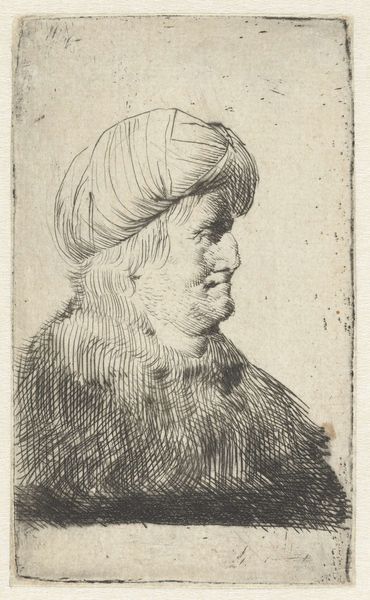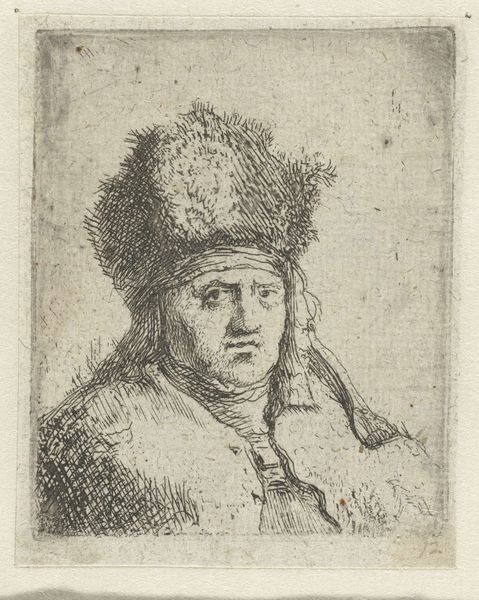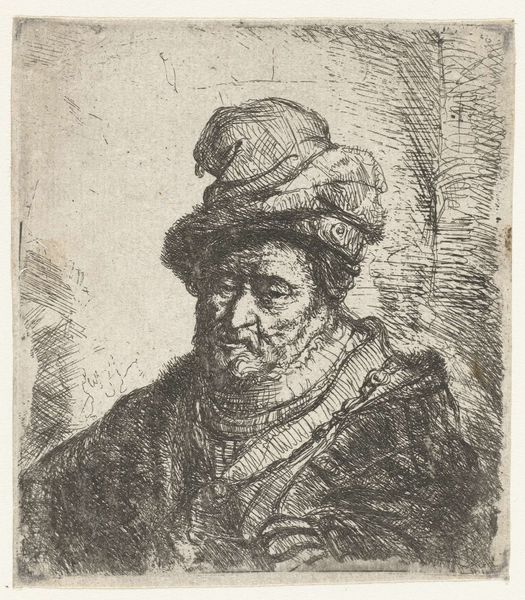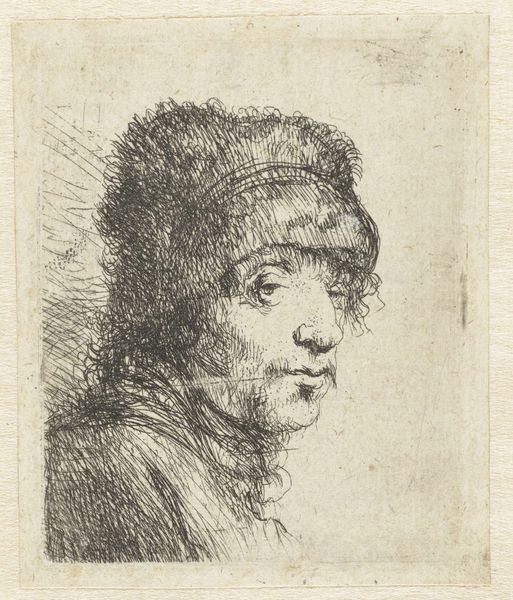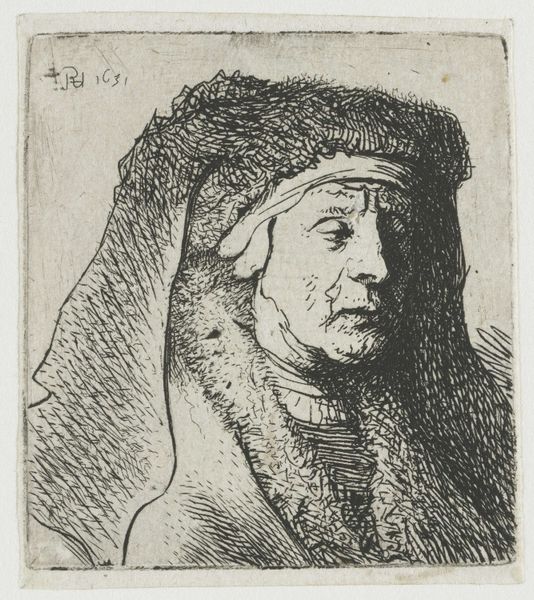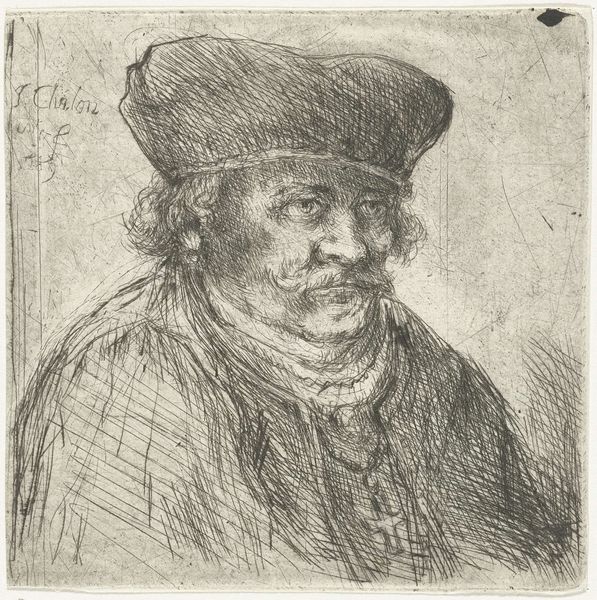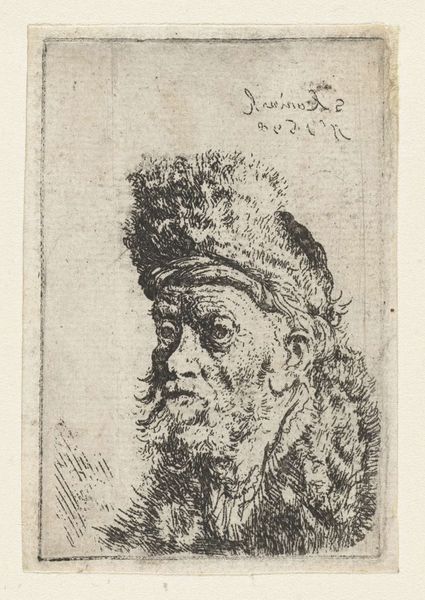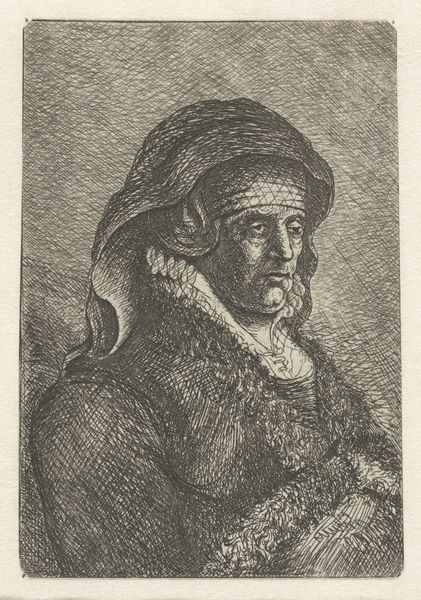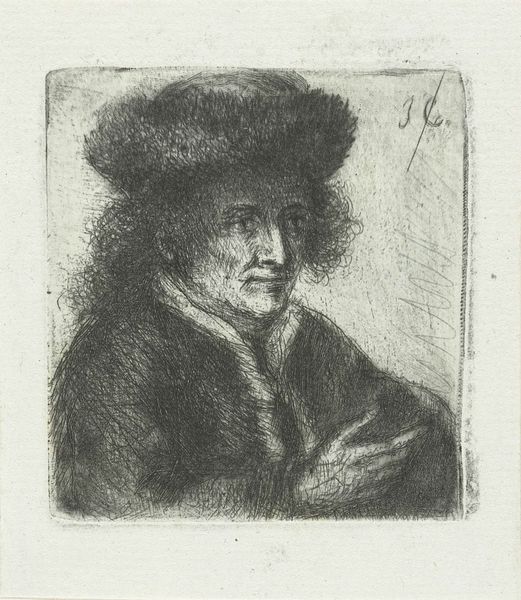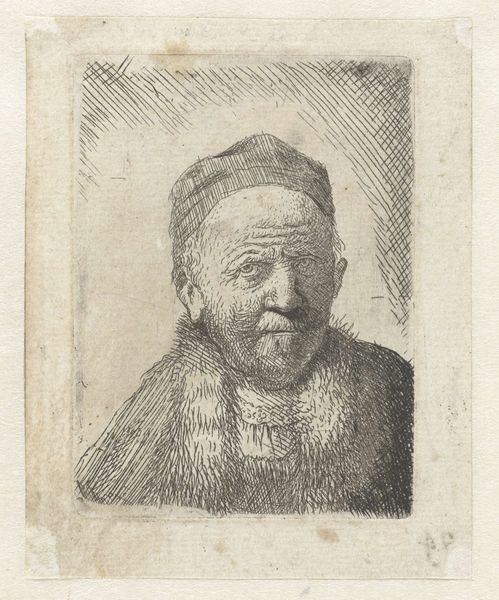
Sheet of studies of men's head: old man in fur coat and high cap c. 1629
0:00
0:00
drawing, print, engraving
#
portrait
#
drawing
#
self-portrait
#
baroque
# print
#
figuration
#
pencil drawing
#
line
#
sketchbook drawing
#
engraving
Dimensions: height 36 mm, width 29 mm
Copyright: Rijks Museum: Open Domain
Curator: This piece before us, residing here at the Rijksmuseum, is "Sheet of studies of men's head: old man in fur coat and high cap," dating back to around 1629, attributed to Rembrandt van Rijn. It's an engraving, showcasing his early mastery of the printmaking medium. Editor: The density of line is astonishing! I'm immediately struck by the almost palpable weight of the fur and fabric—how he renders texture with such minimal means. There is a melancholic mood, too, created by the downturned gaze. Curator: Absolutely. Considering Rembrandt’s historical context, we must examine the prevalent notions of the "tronie"— a Dutch genre, that explored character studies rather than commissioned portraits. Rembrandt often used himself, family, or those on the margins as models for his explorations of diverse social roles. Editor: The strategic deployment of light and shadow, even in monochrome, guides the eye; see how it pools around his eyes and mouth, focusing our attention on the lines etched by time and circumstance. One could view the cap, so lavishly depicted, as a structural element to anchor the composition. Curator: The cap becomes almost a character in itself, representing the era's Dutch fascination with costume and theatricality. He is wearing the material signifiers of an era, it’s worth considering what these symbolise during the Dutch Golden Age and if these sartorial symbols offer us a social insight. Editor: I notice how Rembrandt uses the line work itself to build character. Observe how, the chaotic scrawls suggesting rough texture contrast beautifully with the delicate hatchings defining his facial structure. Semiotically, it becomes a layered signifier, reflecting a life weathered by hard work perhaps, or quiet introspection. Curator: Yes, and thinking intersectionally, such representations allowed Rembrandt to both perpetuate and perhaps subtly subvert certain norms associated with aging, class, and even ideas surrounding masculine presentation during the Baroque period. This work functions as a visual document deeply ingrained in the sociopolitical conditions of its time. Editor: It truly reveals how an ostensibly straightforward portrait study can expose profound formal artistry. Looking at the work in this manner allows us to unpack both his genius with line, but equally the complex interplay of class and personal identity of the day. Curator: It is a deeply evocative glimpse into humanity, and his social milieu through artistic virtuosity. Editor: A compelling lesson in how powerful aesthetic restraint can be.
Comments
No comments
Be the first to comment and join the conversation on the ultimate creative platform.

